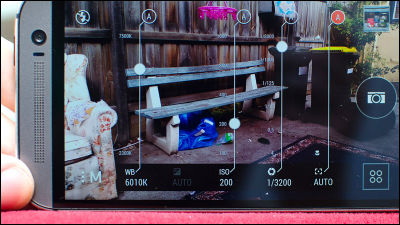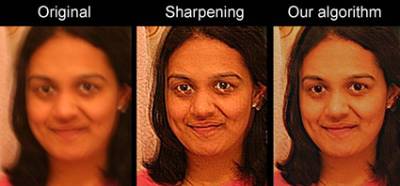A low-light photo review showing the possibilities of a smart camera by Google engineers

Although the camera performance of smartphones has improved year by year, the current situation is that it is not as good as digital cameras in low illumination shooting due to the small size of sensors and lenses. However, Google engineers used software processing to try to shoot how beautiful nightscapes can be taken with Google's Pixel and Nexus 6P, succeeded in taking photographs hard to believe with smartphone cameras It is open to the public on the blog.
Research Blog: Experimental Nighttime Photography with Nexus and Pixel
https://research.googleblog.com/2017/04/experimental-nighttime-photography-with.html
Florian Cainz, who develops software for VR software Daydream at Google Research, introduces an attempt to challenge the limitations of smartphone cameras by official blog. The trigger was a photograph of the Golden Gate Bridge taken by Canines by Canon 1 DX, as well as the development of Google Research's camera softwareGcamWhat friends working in the department saw. It seems that it was decided to challenge how close it can be to the image quality of a digital single lens reflex camera with a smartphone camera.

Google's smartphone Pixel series and Nexus series have "HDR + mode" as image processing function. In HDR + mode, you can shoot ten times of short exposure shots and average the obtained images into one image, reducing blurring and blurring, collecting the amount of light and enhancing image quality. However, Mr. Cain thinks that there is a limit to the amount of light collected by HDR +, and in a scene of low illumination like a night scene, the satisfactory level of image quality has not been reached.
Mr. Caines learned the technique of low-light shooting from "SeeInTheDark" application published by Mark Revoy at ICCV 2015 Extreme Imaging Workshop. In SeeInTheDark, it is a mechanism that secures the amount of light while reducing the noise by reducing the resolution to about 1 million pixels under the condition fixed so that the camera does not move. Mr. Cynes and colleagues combine Google's HDR + mode with SeeInTheDark's technology, synthesize images of 32 burst shots at a shutter speed of 1/4 second, record them as DNG files, and copy the raw DNG files We dropped in Photoshop and removed the noise pattern displayed in grid and output the image.
The picture obtained in this way is kore. I used Nexus 6P for shooting. "The lighthouse light is exposed, but the rest is a natural hue without roughness", Mr. Cains evaluates.

For comparison, pictures using HDR + on hand. The part inside the small rectangular frame is the one that adjusted the brightness to the same level as the picture before, and you can see that there are many noises.

Mr. Cainz who was satisfied with the workmanship of the picture of the lighthouse said he wanted to capture the starry sky. And the photos obtained with 2 seconds exposure are as follows. Even though it is 2 seconds, the stars are moving slightly, so it seems that they did not get the results they expected.

However, the combination of HDR + mode and SeeInTheDark's technology combined and averaged 32 photos of exposure time in 2 seconds are as follows.

It is like this when taking a picture focusing on stars. I succeeded in outputting an image that spectacularly canceled the movement of stars. However, it is said that the grass on the ground has become blurry, because the stars are synthesized so that it will be stationary.

This picture combines photos sharp up to the plants and pictures where the stars are pittly and still pictures and "Photos taken with good points" in Photoshop.

All the photos of the above lighthouse and the vegetation with the starry sky were taken at the night of full moon, and it was said that it was a relatively bright environment. Mr. Cain, who thought about what would happen if we shot under more dark conditions, tried shooting on a day close to the crescent moon.
A picture that synthesized images with burst shooting of 64 shots in total with an exposure time of 2 seconds using Pixel on the crescent moon day.

And a picture taken with Pixel on the moonlightless new moon day. The light which can be seen far is the light of the town around the San Francisco Bay. "It looks brighter than the moonlight shoot, not bad," Mr. Cains said.

A photograph of the Milky Way to challenge the limit. "Although I want to print out, it's a picture quality that I can not say, but it is probably the highest image quality Milky Way photographed with a mobile phone," says Caines.

And this photograph was taken of the Golden Gate Bridge that triggered the challenge with Nexus 6P.

The scenery where the full moon illuminates the San Francisco Bay is like this. Mr. Cainz is satisfied that the resolution is 9 million pixels to 10 million pixels and the resolution is inferior to that of the digital single lens reflex camera, but the other image quality is surprisingly excellent.

These pictures are completed by post-processing on the desktop PC after shooting, and the work to reach the final image quality is troublesome. However, Mr. Cainz thinks that processing should be completed by smartphone alone if developing suitable software, and if you use even a tripod, image quality of the same level as Mr. Cynes got can be projected by nearby smartphone There seems to be sex.
Related Posts:





